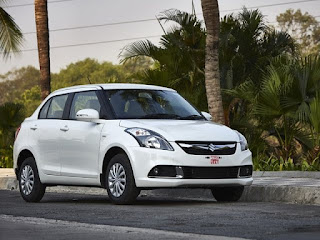Optimal Multi-Taxi Dispatch forMobile Taxi-Hailing Systems
Optimal Multi-Taxi Dispatch forMobile Taxi-Hailing Systems
Traditional taxi-hailing systems through wirelessnetworks in metropolitan areas allow taxis to compete forpassengers chaotically and accidentally, which generally resultin inefficiencies, long waiting time and low satisfaction of taxi-hailing passengers. In this paper, we propose a new MobileTaxi-hailing System (called MTS) based on optimal multi-taxidispatch, which can be used by taxi service companies (TSC-s). Different from the competition modes used in traditionaltaxi-hailing systems, MTS assigns vacant taxis to taxi-hailingpassengers proactively. For the taxi dispatch problem in MTS,we define a system utility function, which involves the totalnet profits of taxis and waiting time of passengers. Moreover,in the utility function, we take into consideration the variousclasses of taxis with different resource configurations, and thecost associated with taxis’ empty travel distances. Our goalis to maximize the system utility function, restricted by theindividual net profits of taxis and the passengers’ requirementsfor specified classes of taxis. To solve this problem, we designan optimal algorithm based on the idea of Kuhn-Munkres(called KMBA), and prove the correctness and optimality of theproposed algorithm. Additionally, we demonstrate the significantperformances of our algorithm through extensive simulations.https://srisivasakthitravels.com/
In recent years, taxi has been an important and indispensabletransportation mode between public and private transporta-tions, owing to its high flexibility and easy accessibility [2].Unfortunately, traditional metropolitan taxi service heavilyrelies on taxi drivers’ experience to identify and pick uppassengers on the streets, resulting in low-efficiency of taxisand long waiting time of taxi-hailing passengers. Thanks tothe rapid development of smartphones and mobile infras-tructures [23], [24], a new taxi business model based onsmartphone applications becomes prevalent rapidly [3], [13],[14]. Accordingly, many smartphone taxi-hailing systems havebeen advanced, such as Hailo, Uber, Didi and Kuaidi, makingpassengers take taxis much easier than before.A typical taxi-hailing system (e.g., Didi) generally involvesthree phases. First, passengers send their taxi-hailing requeststhrough the taxi-hailing clients installed in their smartphones,to taxi servers on the cloud. These requests, also calledorders, mainly include the current locations and destinationsof passengers. After receiving some orders, the system willpublish them to taxis through wireless networks. Second, everytaxi competes with each other for grabbing one order, as soonas it receives these orders. After winning an order, a taxi willgo to pick up and deliver the corresponding passenger to itsdestination, according to the obtained order. Third, passengerswill pay taxis after reaching their destinations. Although suchtaxi-hailing system has provided great convenience for bothpassengers and taxis, it has several non-negligible shortcom-ings. For instance, grabbing taxi-hailing orders might attracttaxi drivers’ much attention to their smartphones, resultingin the hidden danger of traffic accidents. The competitionsamong taxi drivers will also cause lots of waste of resources.Additionally, many drivers often complain that they cannotgrab any order most of time, since other drivers might cheatby using the third-party softwares
.
Traditional taxi-hailing systems through wirelessnetworks in metropolitan areas allow taxis to compete forpassengers chaotically and accidentally, which generally resultin inefficiencies, long waiting time and low satisfaction of taxi-hailing passengers. In this paper, we propose a new MobileTaxi-hailing System (called MTS) based on optimal multi-taxidispatch, which can be used by taxi service companies (TSC-s). Different from the competition modes used in traditionaltaxi-hailing systems, MTS assigns vacant taxis to taxi-hailingpassengers proactively. For the taxi dispatch problem in MTS,we define a system utility function, which involves the totalnet profits of taxis and waiting time of passengers. Moreover,in the utility function, we take into consideration the variousclasses of taxis with different resource configurations, and thecost associated with taxis’ empty travel distances. Our goalis to maximize the system utility function, restricted by theindividual net profits of taxis and the passengers’ requirementsfor specified classes of taxis. To solve this problem, we designan optimal algorithm based on the idea of Kuhn-Munkres(called KMBA), and prove the correctness and optimality of theproposed algorithm. Additionally, we demonstrate the significantperformances of our algorithm through extensive simulations.https://srisivasakthitravels.com/
In recent years, taxi has been an important and indispensabletransportation mode between public and private transporta-tions, owing to its high flexibility and easy accessibility [2].Unfortunately, traditional metropolitan taxi service heavilyrelies on taxi drivers’ experience to identify and pick uppassengers on the streets, resulting in low-efficiency of taxisand long waiting time of taxi-hailing passengers. Thanks tothe rapid development of smartphones and mobile infras-tructures [23], [24], a new taxi business model based onsmartphone applications becomes prevalent rapidly [3], [13],[14]. Accordingly, many smartphone taxi-hailing systems havebeen advanced, such as Hailo, Uber, Didi and Kuaidi, makingpassengers take taxis much easier than before.A typical taxi-hailing system (e.g., Didi) generally involvesthree phases. First, passengers send their taxi-hailing requeststhrough the taxi-hailing clients installed in their smartphones,to taxi servers on the cloud. These requests, also calledorders, mainly include the current locations and destinationsof passengers. After receiving some orders, the system willpublish them to taxis through wireless networks. Second, everytaxi competes with each other for grabbing one order, as soonas it receives these orders. After winning an order, a taxi willgo to pick up and deliver the corresponding passenger to itsdestination, according to the obtained order. Third, passengerswill pay taxis after reaching their destinations. Although suchtaxi-hailing system has provided great convenience for bothpassengers and taxis, it has several non-negligible shortcom-ings. For instance, grabbing taxi-hailing orders might attracttaxi drivers’ much attention to their smartphones, resultingin the hidden danger of traffic accidents. The competitionsamong taxi drivers will also cause lots of waste of resources.Additionally, many drivers often complain that they cannotgrab any order most of time, since other drivers might cheatby using the third-party softwares
In this paper, in order to address the aforementioned prob-lems, we propose a new Mobile Taxi-hailing System, calledMTS, which can be used by Taxi Service Companies (TSCs).An MTS is composed of several Cloud Servers (CSs), lots oftaxi-hailing passengers, and many taxis with different resourceconfigurations (e.g., seat capacity, smoking permission, etc.)that have registered in a TSC. In this system, passengers firstgenerate taxi-hailing orders and send them to CSs via theirsmartphones. Meanwhile, taxis move along different streets.If a taxi becomes vacant, it will tell CSs that it can providethe taxi service. Then, CSs will collect the GPS locations ofthe vacant taxis. Based on the orders, CSs make a decisionto dispatch some vacant taxis to the passengers, and send theresults to both of them, as shown in Fig. 1. After receivingthe notifications from CSs, vacant taxis will go to pick upthe corresponding passengers. When passengers arrive at theirdestinations, they will pay for the taxi services.Different from the competition mode used in traditional sys-tems, MTS adopts the proactive assignment mode to dispatchvacant taxis to taxi-hailing passengers, which can prevent taxidrivers from paying much attention to grabbing taxi-hailingorders. In MTS, the key issue is the optimal multiple taxidispatch problem, i.e., how to assign vacant taxis to taxi-hailing passengers optimally. For this problem, we define asystem utility function, in which we take into considerationthe total net profits of all taxis, the waiting time of passengers,different taxi resource configurations and the cost associatedwith taxis’ empty travel distances. By maximizing this utility,the taxi dispatch can achieve an optimal benefit for the TSCand good waiting experiences for passengers.



Comments
Post a Comment